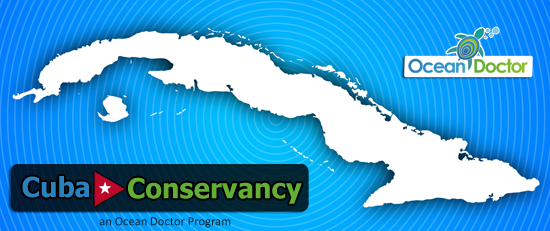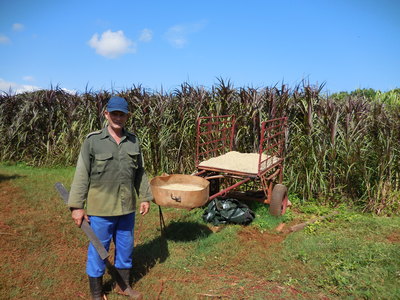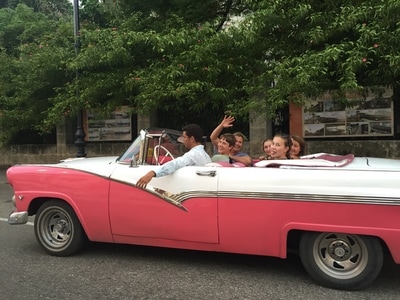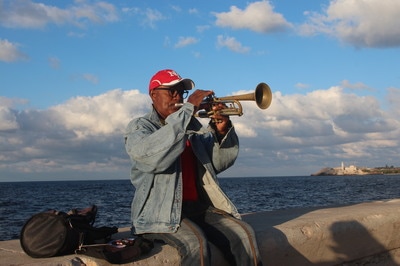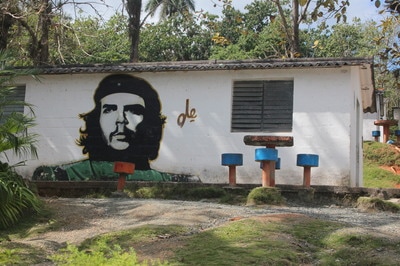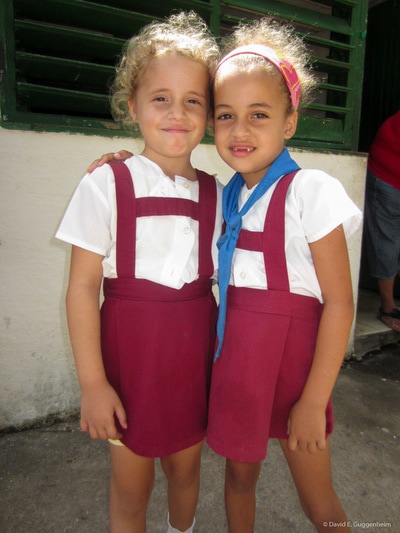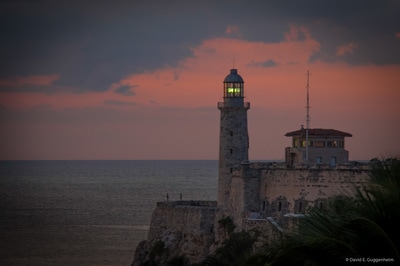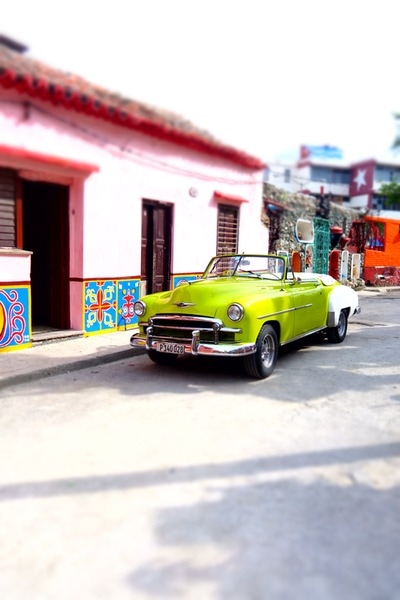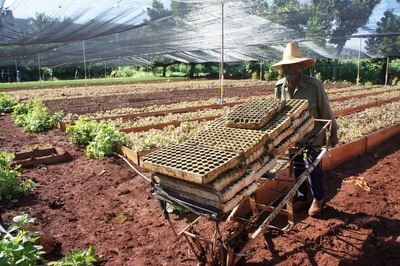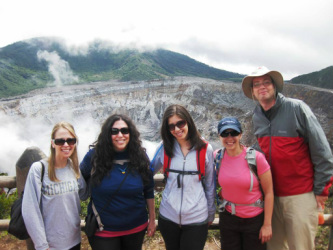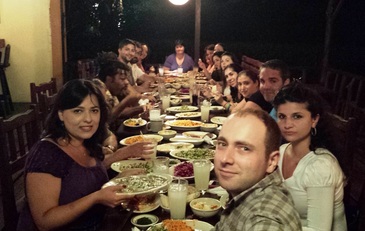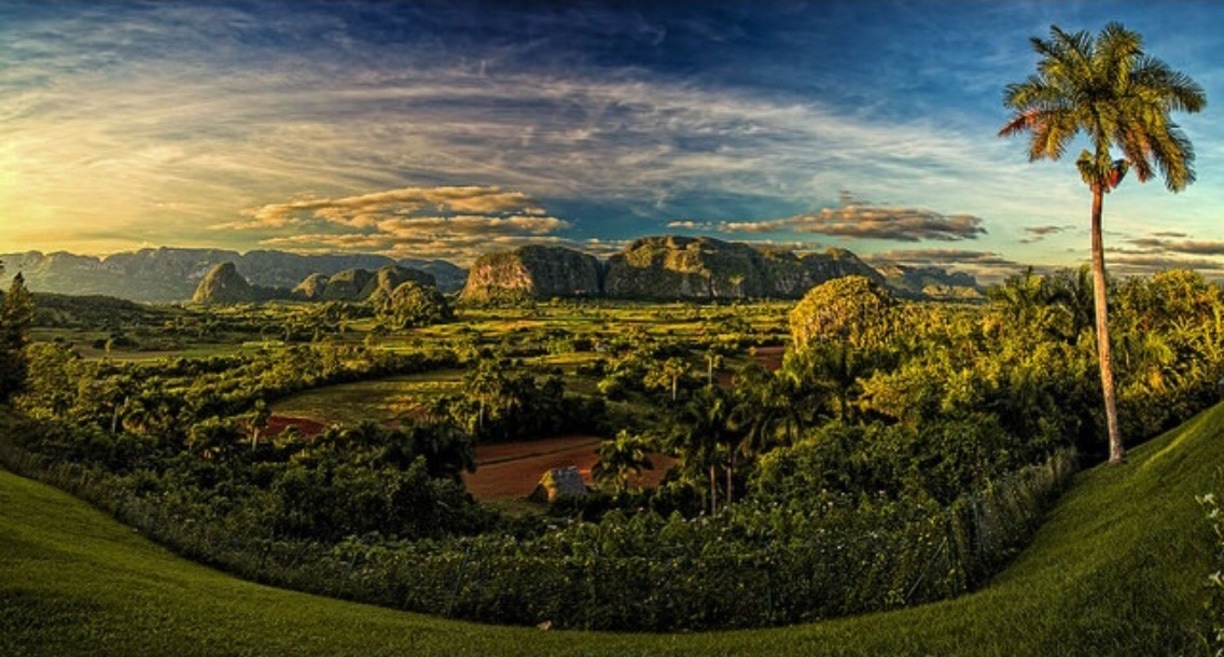-
Overview
-
Whats Included?
-
Itinerary
-
Pricing & Registration
-
FAQ
<
>
We have pushed this trip to fall 2017 - please let us know if you are interested - we will have the new dates up soon!
|
Green Cuba Trip, May 2017 Our Green Cuba trip offers a once-in-a-lifetime opportunity to visit Cuba while engaging in a dialogue about the relationship of Cuban citizens with their natural environment, including burgeoning socioeconomic and cultural issues brought about by normalizing relations with the U.S. and increased tourism. The exchange also represents an opportunity to explore important environmental issues that impact the marine waters that both nations share through face-to-face interaction and citizen science involvement. This journey will also explore Cuba’s most culturally vibrant city – Havana. While in Havana we will engage with Cuban scientists, officials, artists and community members to explore and understand what the future holds for Cuba´s natural environment. The environment, and particularly the marine environment, is something that both biologically and culturally joins Cuba and the U.S. and this program builds upon the strong relationships our partners have forged through our scientific research programs since 2000. |
|
Sustainable Cuba at a glance
Cuba has developed dramatically differently than the rest of the Caribbean, and indeed, the rest of the world. Where other tropical islands have seen their ecosystems savaged by development over the past 50 years, Cuba still possesses large, intact and nearly pristine ecosystems throughout its terrestrial and marine environments. Half of the Caribbean’s coral reefs have perished since 1970, but Cuba’s coral reefs and associated ecosystems remain exceptionally healthy. A growing ecotourism sector depends upon maintaining a healthy environment. A number of communities around the island have realized that protecting their natural environment can translate into better jobs, more pay, and thus more self-sufficiency.
Travel to Cuba under this program is legal for U.S. citizens and residents. Our partner, Ocean Doctor is licensed by the U.S. Treasury Department for educational programs to Cuba and we work to ensure that all activities are in full compliance with U.S. Treasury regulations. Under the U.S. economic embargo of Cuba, travel to Cuba by U.S. citizens for tourism is prohibited. However, licenced “people-to-people” educational visits are permitted.
We take the environment seriously, and plan our trips in accordance with the guidelines of eco-tourism: minimizing environmental damage through low impact travel, supporting local environmental projects and indigenous communities, and learning about the culture and natural environment of the places visited.
Cuba has developed dramatically differently than the rest of the Caribbean, and indeed, the rest of the world. Where other tropical islands have seen their ecosystems savaged by development over the past 50 years, Cuba still possesses large, intact and nearly pristine ecosystems throughout its terrestrial and marine environments. Half of the Caribbean’s coral reefs have perished since 1970, but Cuba’s coral reefs and associated ecosystems remain exceptionally healthy. A growing ecotourism sector depends upon maintaining a healthy environment. A number of communities around the island have realized that protecting their natural environment can translate into better jobs, more pay, and thus more self-sufficiency.
Travel to Cuba under this program is legal for U.S. citizens and residents. Our partner, Ocean Doctor is licensed by the U.S. Treasury Department for educational programs to Cuba and we work to ensure that all activities are in full compliance with U.S. Treasury regulations. Under the U.S. economic embargo of Cuba, travel to Cuba by U.S. citizens for tourism is prohibited. However, licenced “people-to-people” educational visits are permitted.
We take the environment seriously, and plan our trips in accordance with the guidelines of eco-tourism: minimizing environmental damage through low impact travel, supporting local environmental projects and indigenous communities, and learning about the culture and natural environment of the places visited.
The cost of the trip includes:
Everything listed below is included in our trip. These adventures are paid for already – just imagine that! You may, but you do not need to spend another dollar on an adventure – it’s all priced into our packaged tour. For more info, click the itinerary tab.
- Tours and activities listed in the itinerary
- Local ground transportation
- Night accomodation in Cuba, as listed in itinerary - doublle occupancy
- All meals included in the itinerary
- Ocean Doctor educational program
- Ocean Doctor expedition leader
- Greener Travel expedition leader
- Parks entry fees, if applicable
- Snorkeling/diving equipment (1 dive)
- Travel under Ocean Doctor’s people-to-people educational travel license
Please note that if you do not wish to partake in the some of the activities, you may opt out and we will reduce the cost of your trip accordingly.
The cost of the trip does not include:
- International roundtrip airfare from Miami and Visa
- Cuban visa
- Trip insurance
- Individual hotel expenses
- Alcoholic beverages
- Tips
Our tours are organized by Greener Travel Company, LLC. The company was founded by Ami Greener, an experienced and enthusiastic environmentalist that has been captivated by the unique beauty of Costa Rica and the Caribbean. By forming personal relationships with local providers in Costa Rica (hotel owners, activity outfitters and more), we are able to offer a tailored experience to both individuals and couples traveling alone and looking to explore the area, as well as group tours which a member of our staff or local Costa Rican associates will guide.
Though the dates for this trip are set, if you want to join and cannot take the whole week off from work, we could accommodate you for part of the trip, and price it differently as well.
If you cannot make it on these dates, but would like to plan a visit alone, with a small group of friends or a romantic getaway with a significant other - we can help you plan that trip as well with some of these amazing adventures – we regularly send couples, families and small groups of friends on a such trips!
For further information and questions, please contact us at:
Greener Travel LLC
info@costaribbean.com
US: +1-202-599-0655
Cuba trip itinerary
Friday, May 26, 2017
Day 0, Havana: Early arrival option!
Arrive today in Havana and take in the city with an optional visit and Friday night dinner with the local Jewish Community / evening walking tour. Learn about the rich history of the small Cuban Jewish community - and meet community memebers over dinner!
Saturday, May 27
Day 1: Havana
Arrival at Jose Martí Havana International Airport and Transfer to our Casa Particular - or B&B.
Cuba’s capital city, Havana, is a unique city in many different ways. The Caribbean’s largest and most vivacious city, its romantic atmosphere and infectious energy are the stuff of legend. This is the only place in the world where you can find vintage American cars running alongside Russian Ladas, ration shops juxtaposed against gleaming colonial palaces, and revolutionary sloganeering drowned out by all-night parties.
Lunch at a Local Paladar restaurant
En-route stops at major landmarks, such as Revolution Square and Capitol Building.
Visit local neighborhood community project: Jaimanitas
José Antonio Rodríguez Fuster is a national icon and has created a beautiful art work in the neighborhood Jaimanistas (west of Havana). He has gradually and inexorably grown his work to the neighboring streets and houses so that this riot of Gaudilike ceramics now encompasses a whole city block. Victoria Alcalá spends an afternoon with him seeking to get to the heart of what motivates him and his plans for the future.
Orientation meeting: Welcome to Cuba (Guidelines and safe points for the trip)
Welcome Dinner at local Paladar with a local expert in sustainability
Day 1: Havana
Arrival at Jose Martí Havana International Airport and Transfer to our Casa Particular - or B&B.
Cuba’s capital city, Havana, is a unique city in many different ways. The Caribbean’s largest and most vivacious city, its romantic atmosphere and infectious energy are the stuff of legend. This is the only place in the world where you can find vintage American cars running alongside Russian Ladas, ration shops juxtaposed against gleaming colonial palaces, and revolutionary sloganeering drowned out by all-night parties.
Lunch at a Local Paladar restaurant
En-route stops at major landmarks, such as Revolution Square and Capitol Building.
Visit local neighborhood community project: Jaimanitas
José Antonio Rodríguez Fuster is a national icon and has created a beautiful art work in the neighborhood Jaimanistas (west of Havana). He has gradually and inexorably grown his work to the neighboring streets and houses so that this riot of Gaudilike ceramics now encompasses a whole city block. Victoria Alcalá spends an afternoon with him seeking to get to the heart of what motivates him and his plans for the future.
Orientation meeting: Welcome to Cuba (Guidelines and safe points for the trip)
Welcome Dinner at local Paladar with a local expert in sustainability
Sunday, May 28
Day 2: Havana
Early Breakfast in Casa Particular
City Tour of Havana (Old Havana)
Old Havana (Spanish: La Habana Vieja) is the city-center (downtown) and one of
the 15 municipalities (or boroughs) forming Havana, Cuba. It has the second highest population density in the city and contains the core of the original city of Havana. The positions of the original Havana city walls are the modern boundaries of Old Havana. In the late 1980’s UNESCO declared Old Havana a World Heritage Site, due to its architectural wealth.
Visit Callejon de Hamel
Aside from its funky street murals and psychedelic art shops, the main reason to come to Havana's high temple of Afro-Cuban culture in Centro Habana is the frenetic rumba music that kicks off every Sunday at around noon. For aficionados, this is about as raw and hypnotic as it gets, with interlocking drum patterns and lengthy rhythmic chants powerful enough to summon up the spirit of the orishas (Santería deities).
Lunch at a Local Paladar
Visit with staff at the Antonio Núñez Jiménez Foundation of Nature and Man
Fundación Antonio Núñez Jiménez de la Naturaleza y el Hombre is a non-governmental non-profit organization that continues the legacy of Dr. Antonio Núñez Jiménez (1923-1998) through programs of research and development activities that promote a culture of values toward nature in local, national and international level to promote harmony in society and the environment. Its vision is a Cuban society with a well-developed consciousness of the environment, recognizing nature as part of its identity and the resolution of environmental problems with a perspective that integrates sociocultural dimensions.
Partagas Cigar Factory Tour
The cigar factory, housed in colonial buildings, remain much as they were in the mid-19th century. Each specializes in a number of cigar brands of a particular flavor. Tours bypass the tobacco preparations and begin in the galeras (rolling rooms), then pass to the quality-control methods.
Dinner at Local Paladar
Day 2: Havana
Early Breakfast in Casa Particular
City Tour of Havana (Old Havana)
Old Havana (Spanish: La Habana Vieja) is the city-center (downtown) and one of
the 15 municipalities (or boroughs) forming Havana, Cuba. It has the second highest population density in the city and contains the core of the original city of Havana. The positions of the original Havana city walls are the modern boundaries of Old Havana. In the late 1980’s UNESCO declared Old Havana a World Heritage Site, due to its architectural wealth.
Visit Callejon de Hamel
Aside from its funky street murals and psychedelic art shops, the main reason to come to Havana's high temple of Afro-Cuban culture in Centro Habana is the frenetic rumba music that kicks off every Sunday at around noon. For aficionados, this is about as raw and hypnotic as it gets, with interlocking drum patterns and lengthy rhythmic chants powerful enough to summon up the spirit of the orishas (Santería deities).
Lunch at a Local Paladar
Visit with staff at the Antonio Núñez Jiménez Foundation of Nature and Man
Fundación Antonio Núñez Jiménez de la Naturaleza y el Hombre is a non-governmental non-profit organization that continues the legacy of Dr. Antonio Núñez Jiménez (1923-1998) through programs of research and development activities that promote a culture of values toward nature in local, national and international level to promote harmony in society and the environment. Its vision is a Cuban society with a well-developed consciousness of the environment, recognizing nature as part of its identity and the resolution of environmental problems with a perspective that integrates sociocultural dimensions.
Partagas Cigar Factory Tour
The cigar factory, housed in colonial buildings, remain much as they were in the mid-19th century. Each specializes in a number of cigar brands of a particular flavor. Tours bypass the tobacco preparations and begin in the galeras (rolling rooms), then pass to the quality-control methods.
Dinner at Local Paladar
Monday, May 29
Day 3: Viñales
Early Breakfast at Hotel
Viñales Day Tour
In the Province of Pinar del Rio, the Viñales Valley is encircled by mountains and its landscape is interspersed with dramatic rocky outcorps, with a cultural landscape enhanced by the vernacular architecture of its farms and villages. Traditional techniques, particularly of tobacco, have survived unchanged for several centuries.
Dinner at local Paladar
Tuesday, May 30
Day 4: Havana - Trinidad
Trinidad is one of the best-preserved colonial towns in the Caribbean and a World Heritage site, dating back to the 1500s when sugar trade was the main industry in the region. The valley has many idle historic sugar plantations that are a reminder of the importance of sugar to the Cuban economy over the centuries. Slaves from Africa were essential in the operation of sugar plantations, as well as servants in the palatial homes of the owners. Today, due to the lack of investment in the industry, Cuba imports 60% of the sugar it consumes. Trinidad has a strong artisans community, including an outdoor market, well known for artisan works of woodcarvings and fine handmade lace, as well as ceramics, masks, and musical instruments.
Lunch in Trinidad in a Local Paladar
Check-in Casa Particular
City tour
Afternoon at leisure in Trinidad
Dinner in Trinidad in a Local Paladar
Day 4: Havana - Trinidad
Trinidad is one of the best-preserved colonial towns in the Caribbean and a World Heritage site, dating back to the 1500s when sugar trade was the main industry in the region. The valley has many idle historic sugar plantations that are a reminder of the importance of sugar to the Cuban economy over the centuries. Slaves from Africa were essential in the operation of sugar plantations, as well as servants in the palatial homes of the owners. Today, due to the lack of investment in the industry, Cuba imports 60% of the sugar it consumes. Trinidad has a strong artisans community, including an outdoor market, well known for artisan works of woodcarvings and fine handmade lace, as well as ceramics, masks, and musical instruments.
Lunch in Trinidad in a Local Paladar
Check-in Casa Particular
City tour
Afternoon at leisure in Trinidad
Dinner in Trinidad in a Local Paladar
Wednesday, May 31
Day 5: Trinidad
Breakfast at Casa Particular
Hike through El Nicho Waterfalls
Located about 45 minutes from Cienfuegos, the beautiful landscape and waterfalls of el Nicho are a perfect example of Cuba's natural wonders. A full day visit through the Sierra del Escambray Mountain Range, were you will be able to enjoy of the hiking through caves, bath in waterfalls pools and track the mountain´s exotic flora and fauna.
Afternoon for leisure in Trinidad
Salsa lessons with local Casino dancers
Popular dance known as Casino was marketed abroad as Cuban-style salsa or Salsa Cubana to distinguish it from other salsa styles when the name was popularized in the 1970s. Dancing Casino is an expression of popular social culture; Many Cubans consider casino a part of their social and cultural activities centering on their popular music.
Dinner at a Local Paladar
Day 5: Trinidad
Breakfast at Casa Particular
Hike through El Nicho Waterfalls
Located about 45 minutes from Cienfuegos, the beautiful landscape and waterfalls of el Nicho are a perfect example of Cuba's natural wonders. A full day visit through the Sierra del Escambray Mountain Range, were you will be able to enjoy of the hiking through caves, bath in waterfalls pools and track the mountain´s exotic flora and fauna.
Afternoon for leisure in Trinidad
Salsa lessons with local Casino dancers
Popular dance known as Casino was marketed abroad as Cuban-style salsa or Salsa Cubana to distinguish it from other salsa styles when the name was popularized in the 1970s. Dancing Casino is an expression of popular social culture; Many Cubans consider casino a part of their social and cultural activities centering on their popular music.
Dinner at a Local Paladar
Thursday, June 1
Day 6: Trinidad - Cienfuegos
Breakfast at Casa Particular
Visit Valle de los Ingenios
Visit Valle de los Ingenios, also named Valley de los Ingenios or Valley of the Sugar Mills, which is a series of three interconnected valleys about 7 miles outside Trinidad Cuba. The three valleys, San Luis, Santa Rosa, and Meyer, were a centre for sugar production from the late 18th century until the late 19th century. At the peak of the industry in Cuba there were about fifty sugar cane mills in operation in the three valleys, with over 30,000 slaves working in the mills and on the sugar cane plantations that surrounded them.
Visit Otero Family Farm
The Otero´s Family Farm, located 45 minutes from Trinidad, is one of the first Farms that started doing organic agriculture in Cuba. His founder was the very well known Gallego Otero, whom has passed away, however his daughter Tania is still in charge of the Farm. The group will have the opportunity to learn about the farm history and practices, while learning and doing some work for the farm.
Lunch at the Otero Family Farm
Continue trip to Cienfuegos
Dinner at a Local Paladar in Cienfuegos
Day 6: Trinidad - Cienfuegos
Breakfast at Casa Particular
Visit Valle de los Ingenios
Visit Valle de los Ingenios, also named Valley de los Ingenios or Valley of the Sugar Mills, which is a series of three interconnected valleys about 7 miles outside Trinidad Cuba. The three valleys, San Luis, Santa Rosa, and Meyer, were a centre for sugar production from the late 18th century until the late 19th century. At the peak of the industry in Cuba there were about fifty sugar cane mills in operation in the three valleys, with over 30,000 slaves working in the mills and on the sugar cane plantations that surrounded them.
Visit Otero Family Farm
The Otero´s Family Farm, located 45 minutes from Trinidad, is one of the first Farms that started doing organic agriculture in Cuba. His founder was the very well known Gallego Otero, whom has passed away, however his daughter Tania is still in charge of the Farm. The group will have the opportunity to learn about the farm history and practices, while learning and doing some work for the farm.
Lunch at the Otero Family Farm
Continue trip to Cienfuegos
Dinner at a Local Paladar in Cienfuegos
Friday, June 2
Day 7: Cienfuegos
Breakfast at Casa Particular
Cienfuegos City tour
Cienfuegos, Cuba’s “La Perla del Sur,” the “Pearl of the South” summons travelers from around the world, drawn into its seductive melee of French Colonial spirit and architecture. A relatively young city, Cienfuegos was settled in 1819 by French and Louisianan immigrants and to this day retains much of its former charm, leading to its 2005 declaration as an UNESCO World Heritage site. The city is known for its spacious, sea-misted streets and plazas. Throughout its history, ships used the surrounding bay as a refuge during storms in the Caribbean. Our group will meet with local officials discuss the environmental challenges they face with the industrial development along the bay and the coastal areas.
Trip to Girón – Zapata Swamp
In April 1961, Playa Girón was one of two landing sites for seaborne forces of about 1,500 armed Cuban exiles in the Bay of Pigs Invasion, an American CIA-sponsored attempt to overthrow the new government of Cuban Prime Minister Fidel Castro. Over 72 hours, fighting took place in many parts of the Cienaga de Zapata, Playa Girón being the last remaining area occupied by the invaders.
Lunch at a local paladar
Visit Playa Larga – Diving/ Snorkeling
Playa Larga, on the historic site of Bay of Pigs, Playa Larga is a tourist destination in the Zapata Swamp and it was one of two beaches invaded by US-backed exiles on 1961. It is now a Divers and Snorkelers paradise
Check – in Girón Casa Particular
Dinner at Casa Particular
Day 7: Cienfuegos
Breakfast at Casa Particular
Cienfuegos City tour
Cienfuegos, Cuba’s “La Perla del Sur,” the “Pearl of the South” summons travelers from around the world, drawn into its seductive melee of French Colonial spirit and architecture. A relatively young city, Cienfuegos was settled in 1819 by French and Louisianan immigrants and to this day retains much of its former charm, leading to its 2005 declaration as an UNESCO World Heritage site. The city is known for its spacious, sea-misted streets and plazas. Throughout its history, ships used the surrounding bay as a refuge during storms in the Caribbean. Our group will meet with local officials discuss the environmental challenges they face with the industrial development along the bay and the coastal areas.
Trip to Girón – Zapata Swamp
In April 1961, Playa Girón was one of two landing sites for seaborne forces of about 1,500 armed Cuban exiles in the Bay of Pigs Invasion, an American CIA-sponsored attempt to overthrow the new government of Cuban Prime Minister Fidel Castro. Over 72 hours, fighting took place in many parts of the Cienaga de Zapata, Playa Girón being the last remaining area occupied by the invaders.
Lunch at a local paladar
Visit Playa Larga – Diving/ Snorkeling
Playa Larga, on the historic site of Bay of Pigs, Playa Larga is a tourist destination in the Zapata Swamp and it was one of two beaches invaded by US-backed exiles on 1961. It is now a Divers and Snorkelers paradise
Check – in Girón Casa Particular
Dinner at Casa Particular
Saturday, June 3
Day 8: Playa Girón - Havana
Breakfast at Casa Particular
Drive Girón – Havana
Vivero Alamar Visit
Vivero Alamar is an organipónico (organic urban) farm located in Alamar, a large Barrio just outside of Havana, Cuba. It was founded in 1997 by Miguel Salcines, a former agronomist for the Ministry of Agriculture, along with three others. This farm was developed to feed the surrounding neighborhood. Originally an 800 m2 (8611 square foot) vegetable garden, the farm has grown to about 25 acres, including animals, fruits, herbs, vinegars and spices. Vivero Alamar sells its products to nearly 50,000 people every year. Prior its existence fresh produce was much more difficult to obtain. Today, the farm plants three million seedlings and harvests 300 tons of vegetables annually.
Lunch at Vivero Alamar
Casa Particular Check-in
Afternoon of Leisure in Havana
Dinner at Local Paladar
Sunday, June 4
Day 9: Havana - North America
Breakfast at Casa Particular
Check-out
Transfer to Jose Martí Havana Airport
Check in for your U.S.-bound flight
Departure
***Please note that the time and location of an activity might change due to unexpected circumstances, such as inclement weather and hazardous road conditions.
Day 9: Havana - North America
Breakfast at Casa Particular
Check-out
Transfer to Jose Martí Havana Airport
Check in for your U.S.-bound flight
Departure
***Please note that the time and location of an activity might change due to unexpected circumstances, such as inclement weather and hazardous road conditions.
Practical travel details
Dates
The Green Cuba trip will take place from Saturday, May 27th to Sunday, June 4, 2017 (8 nights in total; 9 nights for those wishing to arrive on Friday, May 26). We will be meeting at and leaving Jose Martí Havana Airport (HAV).
We ask that you plan to be on a flight that will land in Havana as early as possible on May 27th. If you decide to arrive a day earlier on Friday, May 26th, please do so as well. Your flight home can be any time on Sunday, June 4th.
Accommodations
During our trip we will be staying in Casas Particulares - local Cuban B&B. Recent reforms in Cuban law has allowed house owners to offer B&B service to tourists. These comfortable accommodations are an authentic alternative to state-run or chain hotels.
Guides
For your Green Cuba Experience, we will provide you with an experienced guide throughout the trip,a Greener Travel representative that will escort you for the length of your trip, as well a group leader from US based environmental NGO Ocean Doctor. We work mostly with local guides as well as with tourism non-profit organizations which make sure that the local indigenous communities benefit from tourism revenues while protecting the environment and the traditional way of life.
Transportation
We provide all transfers during the week using an air conditioned van or minibus.
Packing list
Before departing, you will receive a comprehensive list of suggested things to bring on the trip.
Pricing & Terms
Looks like an amazing Trip! How much does it cost?
The early bird cost of the trip is $2990 - and will go up to $3100 on February 20.
Cost is for participant sharing a double room. A single supplement is available, based on availability, for an additional fee of $300/8 days or $350/9 days.
|
Great! How do I sign up?
First, please fill out our trip registration form! Second, to reserve your spot on the trip, click on the shopping link to the right to make your secure deposit of $400 via our secure Stripe payment system. Our trip will have a maximum of 18 participants. Once we confirm and call the trip, the $400 deposit will become non-refundable - we need to enforce this policy in order to cover loss from last-minute cancellations. Closer to the date of departure we will provide you with the link to make the rest of your payment. For more details on our cancellation policies, please see info below. For general questions about the trip, please write us at: info@costaribbean.com Please feel free to forward this info to any friends of yours that might be interested in joining us for this week - ask us about our special registration price for groups of two or more that register together! If you have a discount code, you will be asked to provide it while registering or before submitting a payment via our secure Stripe payment tool.
|
Note: at checkout the banner will say"August 2014 Trip" - this is a minor glitch, and has nothing to do with the trip you are booking! |
Greener Travel Company, LLC Policies for Costa Rica group tours
RESERVATION AND BOOKING
Reservation and Deposit: To reserve your spot in one of our group tours, you must pay your deposit in full. Until you have paid your deposit, your spot may be given away to another traveler. Since our trips are generally limited to 18 participants or less, they do fill up.
Airfare; “Calling” of Trip: Greener Travel generally “calls” our Group Trips after at least 7 people have registered for the trip. At that time, it sends an email to all travelers who have registered, informing them that they can purchase their airfare. This trip has been called, and has a guaranteed departure.
Possible Delays and Trip Insurance: We strongly encourage all of our travelers to purchase trip insurance. Greener Travel is not responsible for airline delays and cancellations and in most cases will NOT be able to offer any refunds for travelers who miss all or part of their tour due to airline delays and cancellations. Some suggestions are Travelex and Travel Guard.
Full Payment: Full payment must be made at least 5 weeks prior to the trip departure date or your spot is subject to forfeit to another traveler. Ask us about “early bird” discount for travelers who pay the full amount of a trip prior to the “call” date.
Method of Payment: We accept payment by check or Stripe (available on our website). We are offering an additional discount of $90 for payment by check for travelers registering sufficiently in advance of the departure date. Please make checks payable to:
Greener Travel LLC.
1742 Kalorama Rd. NW
Unit B
Washington, DC 20009
USA
DISCOUNTS
Combination of Discounts: From time to time, Greener Travel may offer certain discounts or coupon codes. Those codes can NEVER be combined. All discounts are always applied to the full price trip (and not the discounted or early bird price).
Bring a Friend Policy: If you and up to three friends register together, Greener Travel will rebate you $100 and each of your friends $50 after the trip has been completed.
CANCELLATION AND REFUND
Cancellation by You and Refunds: Up until the trip has been “called”, you may cancel your trip at any time for any reason, and Greener Travel will refund the full amount of your payment, less a $15 processing fee. After a trip has been “called,” your deposit will not be refunded for any reason, including if your spot is forfeited to another traveler.
If you wish to cancel your booking, you must submit your request to us by email.
Cancellation fees are based on the date your written notification is received by Greener Travel.
Airlines, charter companies, lodges and other suppliers impose deposit and cancellation rules requiring us to make non-refundable payments in advance. If you must cancel prior to departure, your deposit will be returned less the applicable cancellation fee plus any additional non-refundable payments made on your behalf.
If a cancellation is made:
- 90 days or more prior to departure, 20% of the travel fee is forfeited.
- 89 – 61 days prior to departure, 30% of the travel fee is forfeited.
- 60 days or less prior to departure, 100% of the travel fee is forfeited and no refund is available.
For this reason, we STRONGLY encourage you to purchase travel insurance: some suggestions for such insurance are Travelex and Travel Guard.
Cancellation by Greener Travel: We may cancel the trip for any reason prior to “calling” the trip. If we do so, we will refund the entire amount that you have paid, without applying any processing charges or other fees. We will not be responsible for any travel arrangements you have made, such as airfare, purchased before the “call” date. In the extremely unlikely event that we have to cancel a trip after it has been called, we will refund all amounts paid to you, but cannot be responsible for any other amounts, such as airfare.
MEALS AND ITINERARY CHANGES
Meals: All meals provided on our group trips are kosher-style and vegetarian friendly, however, most are prepared in kitchens that prepare non-kosher foods. We might be able to accommodate travelers who keep strictly kosher on our group trips – please contact us for information about such possibilities.
Itinerary changes: We will make our best efforts to maintain the itinerary as advertised, however, a variety of reasons, including the number of trip participants, availability of vendors and providers, and other factors, may cause us to need to change our final itinerary. In the very unlikely event we have to cancel a tour in its entirety due to factors beyond our control, we will refund the full amount paid not be liable for any other costs beyond the amount that you have paid.
ACKNOWLEDGEMENT AND ASSUMPTION OF RISK; WAIVER OF LIABILITY
Acknowledgement and Assumption of Risk; Waiver of Liability: You acknowledge that travel includes a variety of known and unanticipated risks, which could result in injury, paralysis, or death, or damage to property. You acknowledge that those risks may be created by negligence of Greener Travel, its owners, employees, contractors, and agents, other travelers of Greener Travel, and third party providers over whom Greener Travel has no control, as well as weather and natural disasters. You agree to accept and assume all risks existing in this activity, and to release, forever discharge, and agree to indemnify and hold harmless Greener Travel from any and all claims, demands, or causes of action, which are in any way connected with my participation in our trips, including any such Claims which allege negligent acts or omissions of Greener Travel. Should Greener Travel or anyone acting on their behalf be required to incur attorney’s fees and cost to enforce this agreement, you agree to indemnify and hold them harmless for all such fees and costs.
FITNESS FOR TRAVEL AND HEALTH INSURANCE
Fitness for Travel: It is your responsibility to determine that you are capable of participating in all of the activities offered on this trip and to opt out of any activities that you are not able to participate in due to your abilities (ie, ability to swim, etc.), disability, or any medical conditions.
Travel Health Insurance: We strongly encourage travelers to purchase travel health insurance to cover any medical events or emergencies that occur while you are on your trip. PLEASE NOTE THAT TRAVEL HEALTH INSURANCE AND TRAVEL INSURANCE ARE NOT THE SAME THING—Travel insurance covers the cost of your trip in the event of travel delays or your need to cancel the trip. Travel health insurance is a health insurance policy that covers your medical costs in the event of illness or injury overseas. Following is a suggested link that allows you to compare between different options and purchase the insurance online.
USE OF IMAGES
You agree that any images, including photographs and videos, of you taken during the trip may be used by Greener Travel at no charge for commercial purposes.
CONSENT TO JURISDICTION, WAIVER OF REMEDIES
You also agree that any dispute concerning Greener Travel’s services will be determined by the courts in the District of Columbia and consent to jurisdiction in those courts. You agree that if you have any dispute regarding Greener Travel’s services, you will present a claim to us in that regard within 2 months of travel, and will not file an action more than 9 months after the completion of travel. Should you accept a payment or refund of any amount in the event of a dispute, you agree to waive any other rights and remedies you may have under applicable law. In no event will Greener Travel be liable for any costs above the amount paid by you to Greener Travel.
FAQ: Greener Travel trips to Cuba
Cuba: Basic information
- Language: Spanish
- Time Zone: CST (Cuba Standard Time), the same as EST
- Capital: Havana
- President Raul Castro
- Climate: Subtropical climate, with average temperature of 77 Fahrenheit in winter and 88 Fahrenheit in summer.
Who comes on your trips? What is the age range?
Our trips are very diverse. Our last trip had travelers from more than 4 countries. For our young professionals’ trips, our age range is roughly late 20s to early 40s, with most participants in the middle of that range at roughly 25 to 35.
What makes your trips different from your competitors?
First, our trips focus on small, locally run hotels and tour operators. We do not use “all-inclusive” resorts, as we believe that they are not the best way to experience the culture of our destinations and to benefit the local community, one of the goals of eco-tourism. Second, we strive to make our group trips affordable while including as many items as possible. You might find a cheaper trip, but you will find that most of the activities are optional and at added cost. We believe it is better value to include those items and facilitates our primary goals of giving you a fun experience in a group setting where you can meet new people.
Is it legal to travel to Cuba from the US?
Travel to Cuba under this program is legal for U.S. citizens and residents. Ocean Doctor is licensed by the U.S. Treasury Department for educational programs to Cuba and we work to ensure that all activities are in full compliance with U.S. Treasury regulations. Under the U.S. economic embargo of Cuba, travel to Cuba by U.S. citizens for tourism is prohibited. However, licenced “people-to-people” educational visits are permitted.
What are “people-to-people” educational visits?
The U.S. government authorizes people-to-people visits to Cuba, in which travelers are required to have a full-time schedule of educational exchange activities that will result in meaningful interactions between travelers and individuals in Cuba.
What is the currency in Cuba?
Cuban Convertible Peso (0.87 Cuban Convertible Peso = $1.00 USD) Note that there is a fixed 13% penalty charged and currency exchange fee. You can bring Euros or Mexican Pesos, you might be able to change it at a better rate. Please check the approximate rate for other currency different than USD before traveling. CUCs are not accepted and cannot be exchanged outside of Cuba. You can exchange your unused CUCs at the airport prior to departure.
Can I use US credit cards in Cuba?
US credit cards will not work while we are in Cuba, despite recent news stories. Ocean Doctor recommends bring cash and plan to convert to Cuban Pesos (kooks) – see above for conversion details. You may convert your cash at the hotel and/or airport.
What is a paladar? Seems we will be eating in many of those!
A paladar is a private (i.e., not State-run) restaurant in Cuba. Paladares get their name from the Brazilian soap opera Vale Tudo, popular in Cuba in the early 1990s, that depicted a family with a restaurant in their home. Paladares were legalized in Cuba in the 1990s but were limited in size and number until the privatization reforms introduced by President Raúl Castro when paladares became widespread.
Havana arrival
You’ll proceed through passport control, where you may be asked if you have recently traveled to Africa. (This is part of their public health screening given concerns over ebola and other diseases.) You will complete a Cuban customs form and health questionnaire on the flight. Finally they’ll stamp your passport and visa and hand them back to you. DO NOT LOSE YOUR VISA. You must have it at all times during your trip and it will be collected by passport control on your departure.
Once through passport control, you’ll pass through a medical detector, a nurse’s station where they’ll collect your health form, and then you’ll wait for your checked bags. This can take a while as the airport is slow. Once you have your bags, you’ll leave the airport and turn in your customs forms on the way out. Outside the airport you’ll find a noisy crowd of Cuban families anxiously awaiting their loved ones. We will be waiting for you there!
Note: you will be able to obtain your Cuba visa from us or directly from the airline on day of departure (cost $50-70).
Telephone
Because of the U.S. economic embargo against Cuba, there have been no relationships between Cuba's mobile carrier, CubaCel and U.S. carriers, although this is now changing. (For example, Verizon subscribers now report being able to receive data services on their phones in Cuba; please use with caution as International roaming rates can be exorbitant!) Therefore, your mobile phone will most likely not function in Cuba for cellular service. You can make telephone calls from your hotel room, however they are costly (USD $3-4/minute calling the U.S.) Remember, you'll need to settle your bill in cash.
Internet
Use of the Internet in Cuba is tightly controlled, slow and expensive. Wifi cards are available for purchase at hotels at a price of about 5 to 10 CUC per hour.
Electronics
It varies depending on where would you will be staying, however, most hotels are equipped with standard North American 120V plugs. 220 v / 60 Hzare also common, therefore we recommend you to travel with a UK/European power adapter w/ converter. It's fine to bring a laptop, tablet, smart phone, cameras etc. for your own use. Anything that might raise eyebrows is best left behind, including especially sat phones (sat anything for that matter), GPS and walkie-talkies. Also, bringing more than one laptop may prompt questions from Cuban authorities about whether you're planning to give the laptop to a Cuban (in which case, you'll be charged a hefty import tax).
Do I have to do all the activities? Can I get a partial refund if I skip one of the activities?
We try to make our trips accessible for travelers of most abilities and encourage all travelers to fully participate in the activities unless a traveler is afraid of a particular activity or cannot participate due to a medical condition or ability level. However, if you do not want to do a particular activity, you can opt out for any reason. Because we make our best efforts to offer an alternative activity for opting out travelers for no additional cost, we cannot generally offer a partial refund for opting out travelers.
Who will I be rooming with if I chose double-occupancy?
If you are joining the trip with someone you know, we will honor your requests to room together if you wish. If you are joining the trip by yourself, we will match you up with another same-sex traveler to share a room. If during the trip, you meet someone with whom you want to share a room with, we will try to honor your request at that time.
How much is airfare to Cuba? Can you help me choose my ticket?
Airfare to Cuba from major metropolitan areas in the U.S. can be as low as $200 for return airfare, however, that depends on your origin and travel dates. We advise travelers to check rates prior to booking a trip with us, however, you should not purchase your travel before the trip has been “called.” At that time, we would be glad to give you advice on which ticket to purchase.

